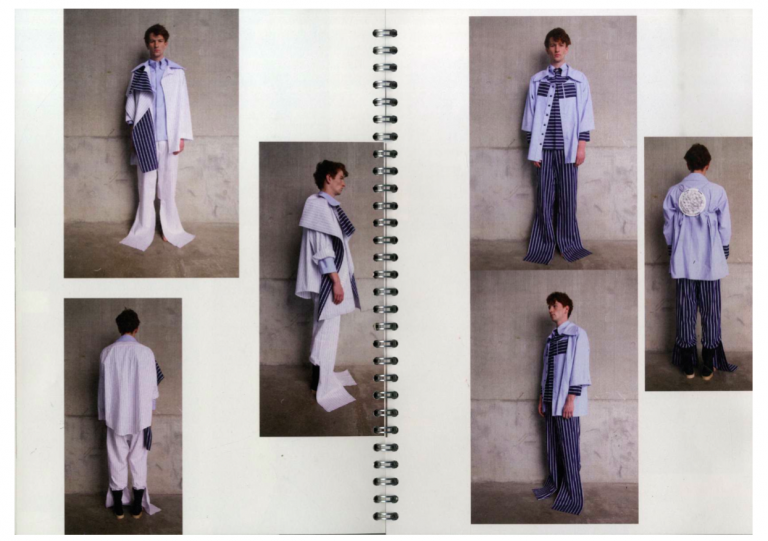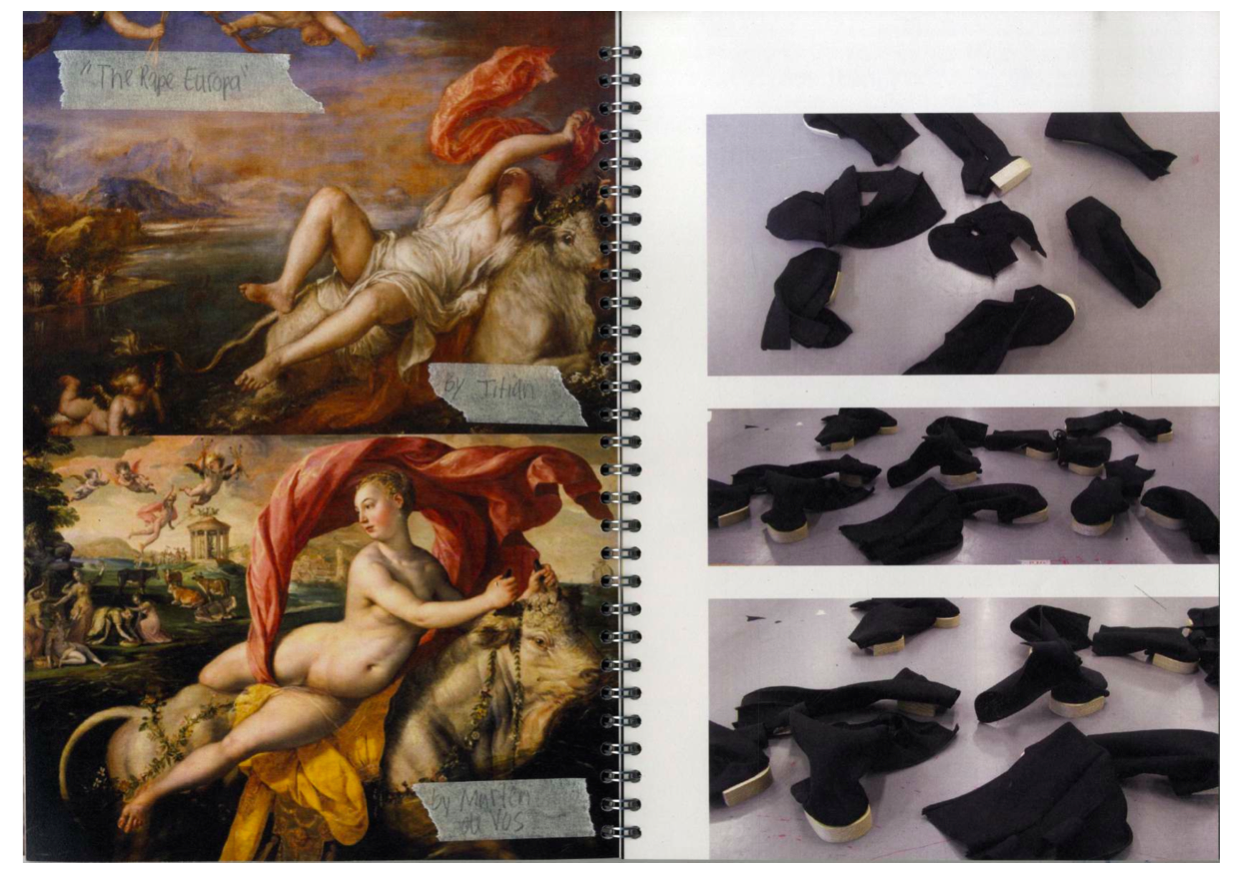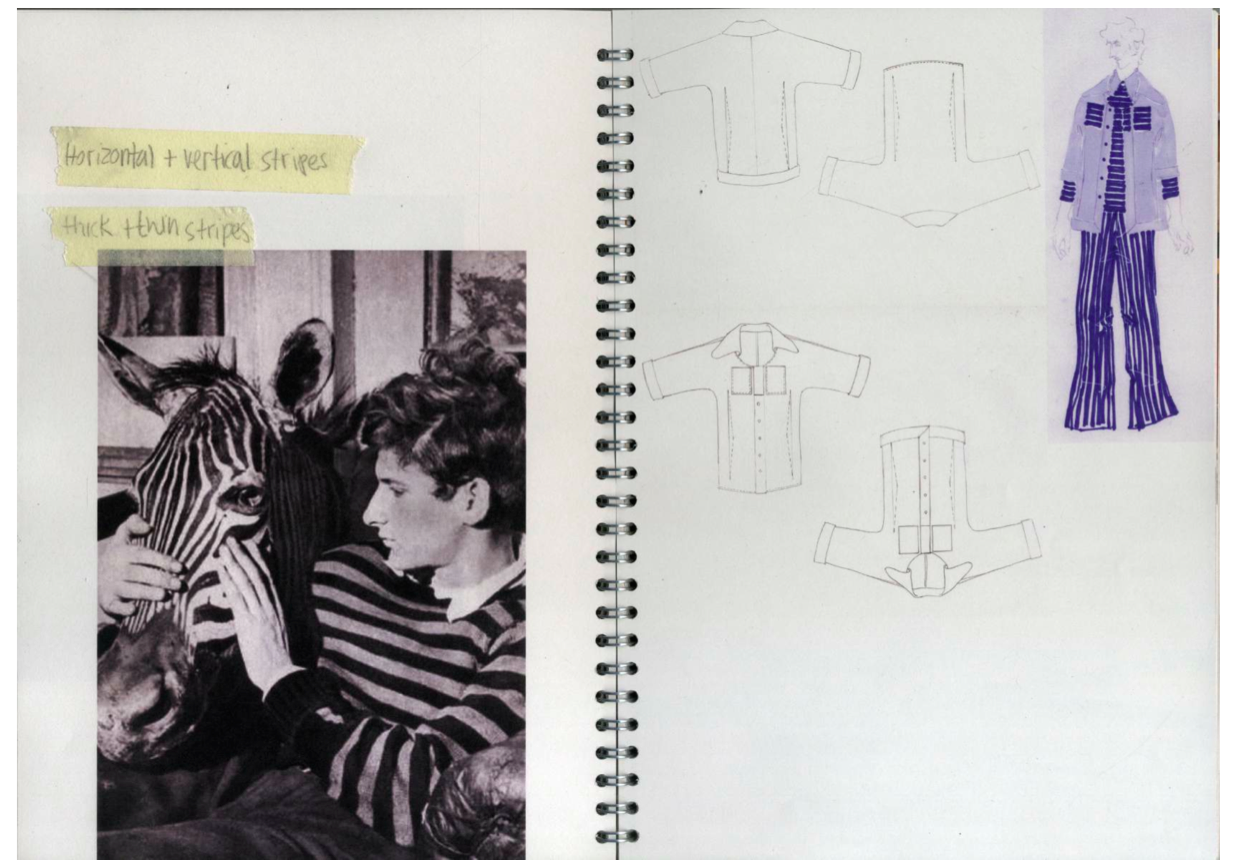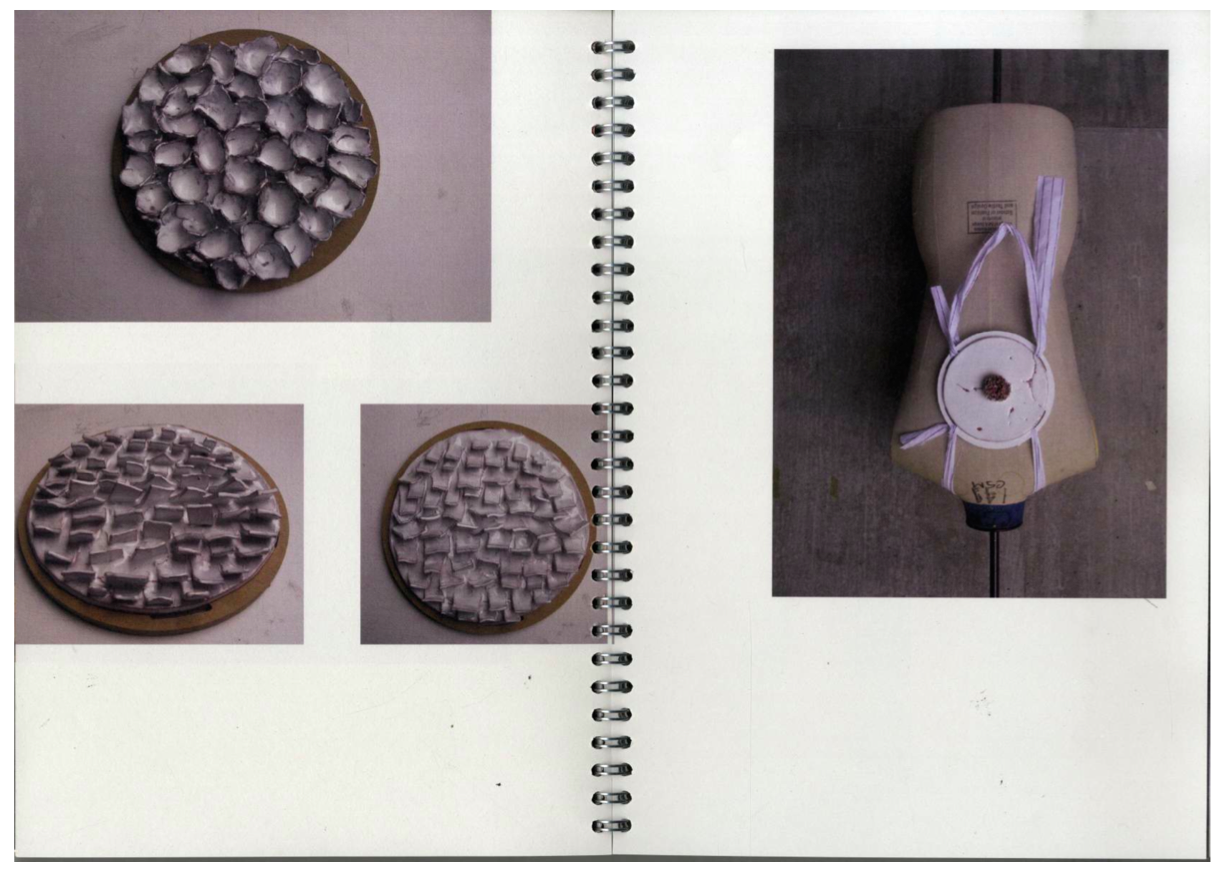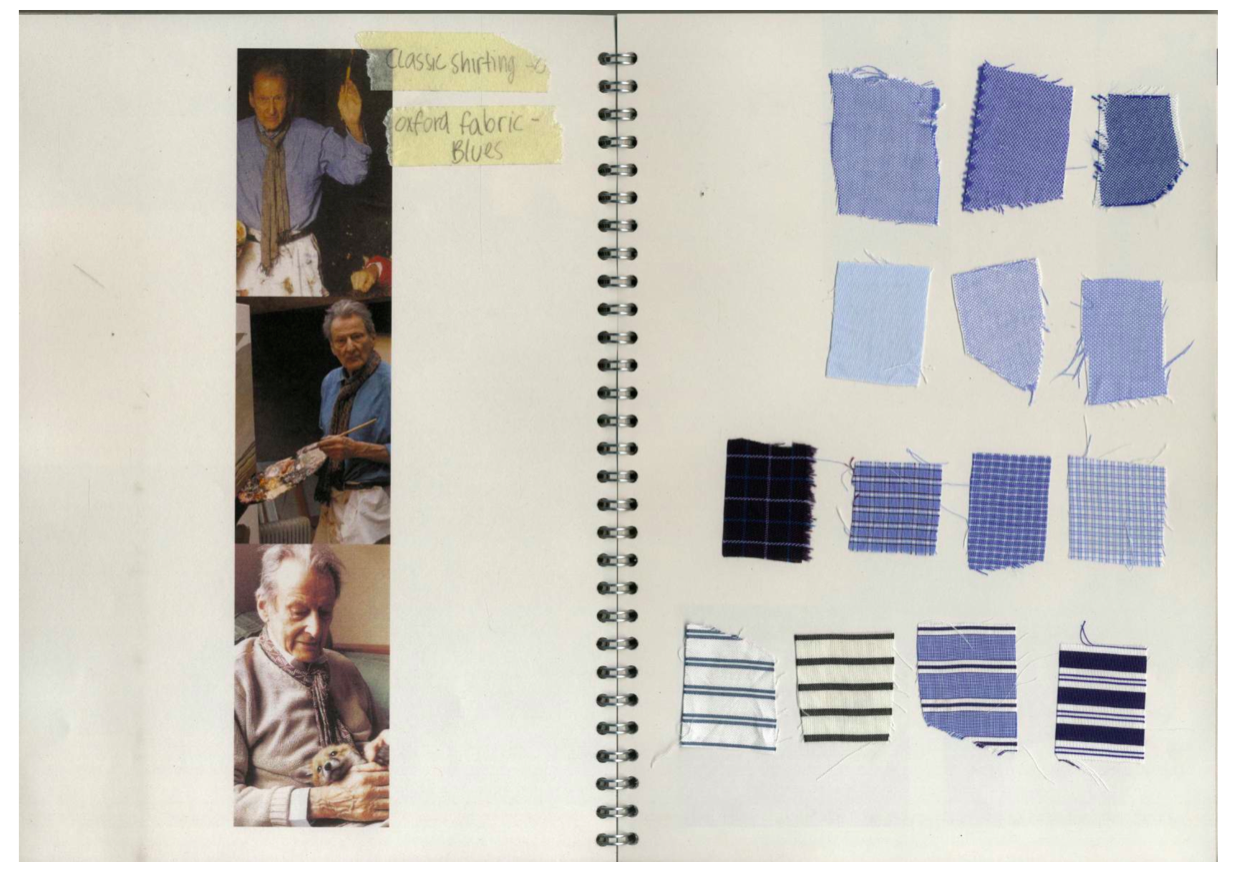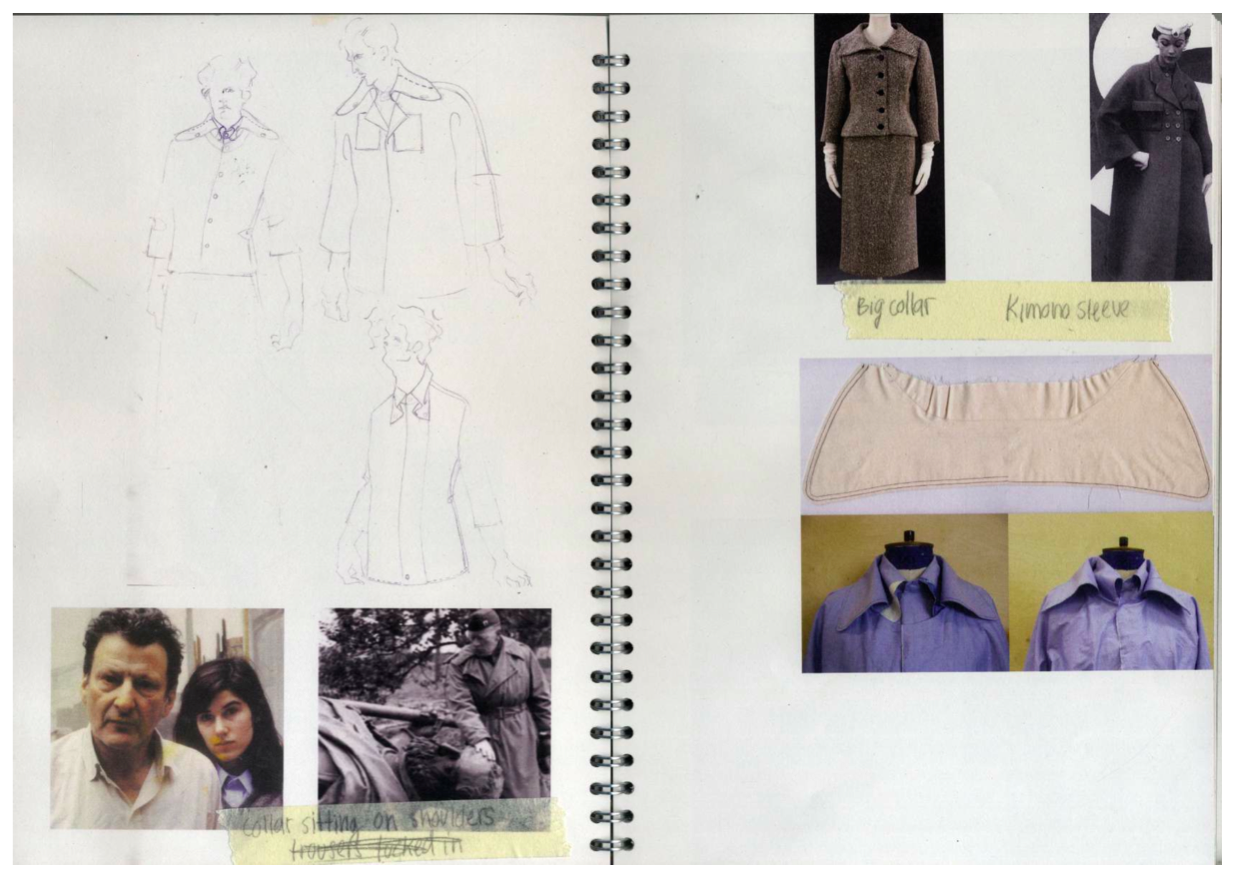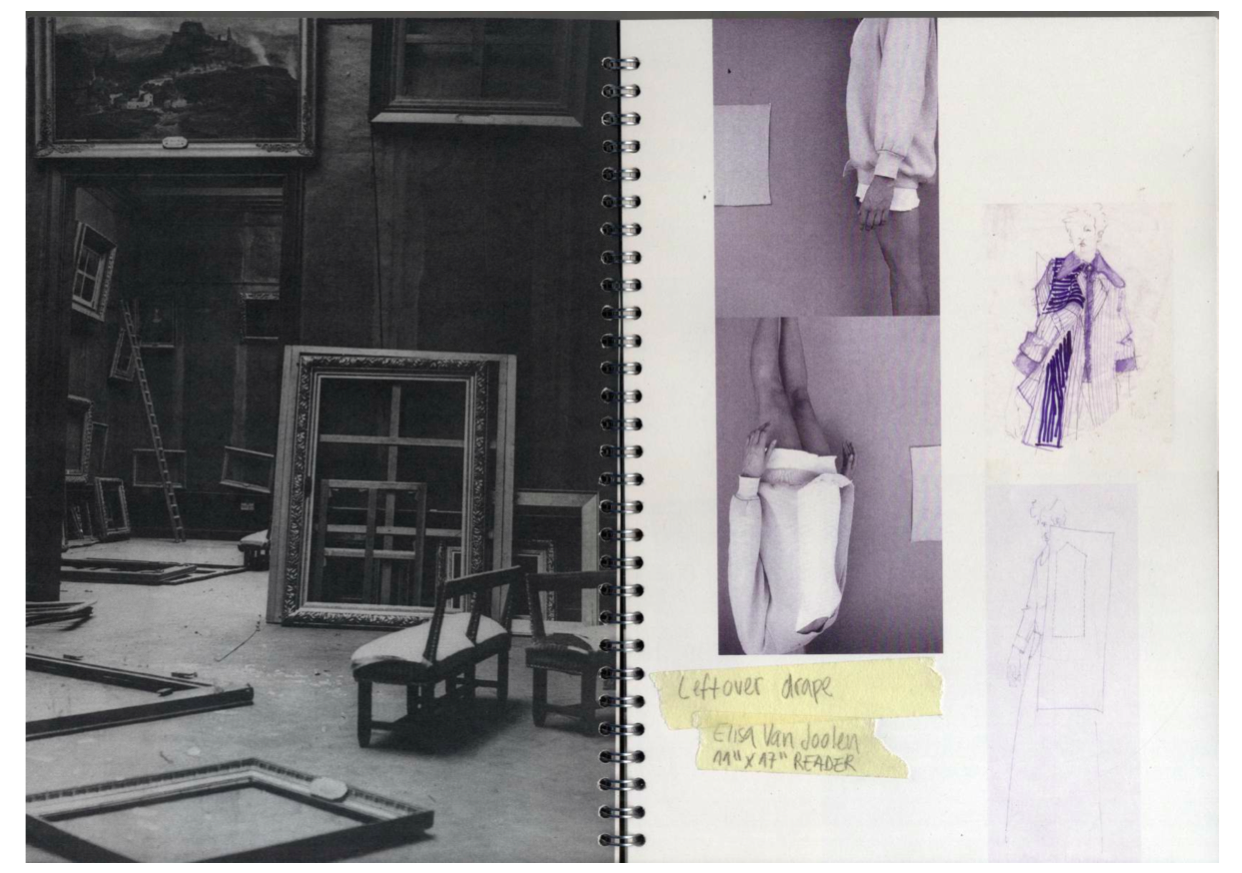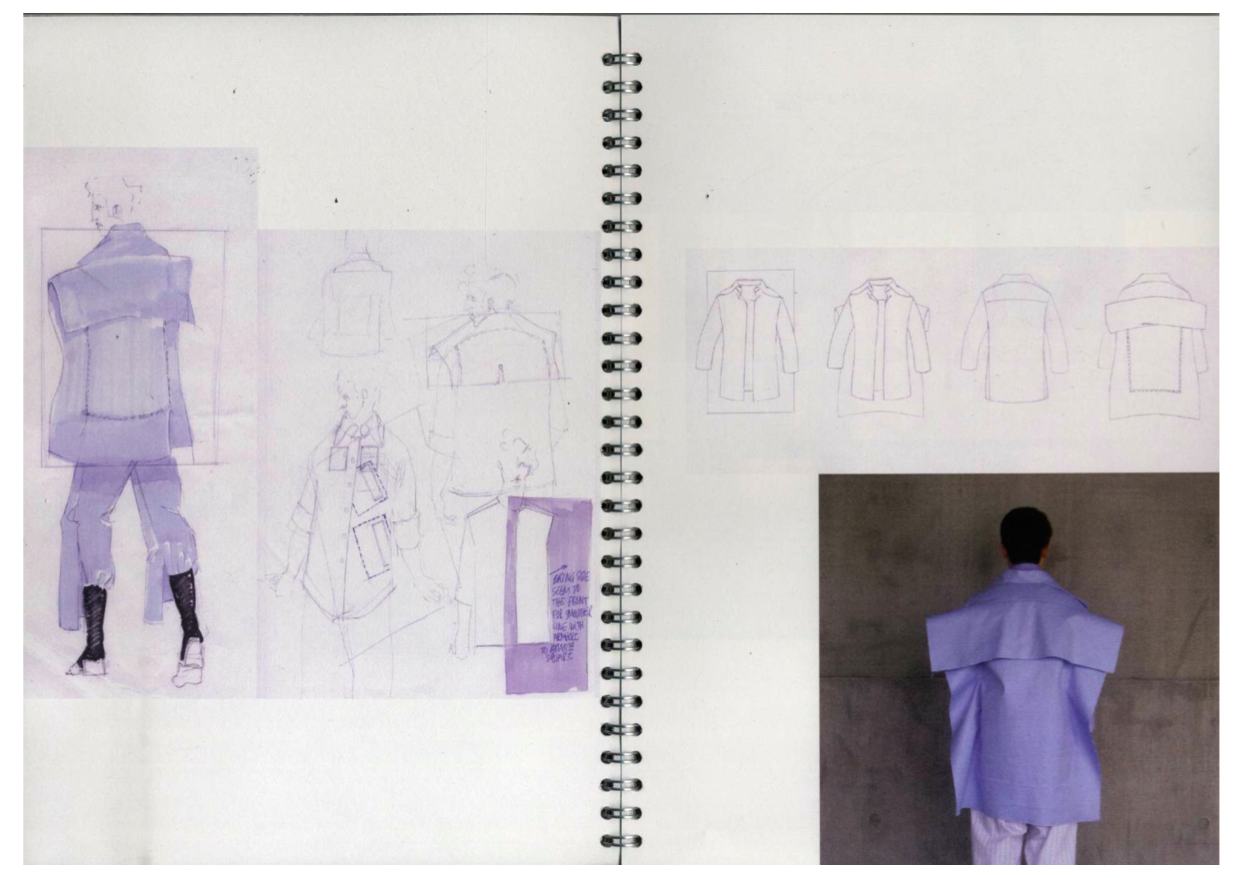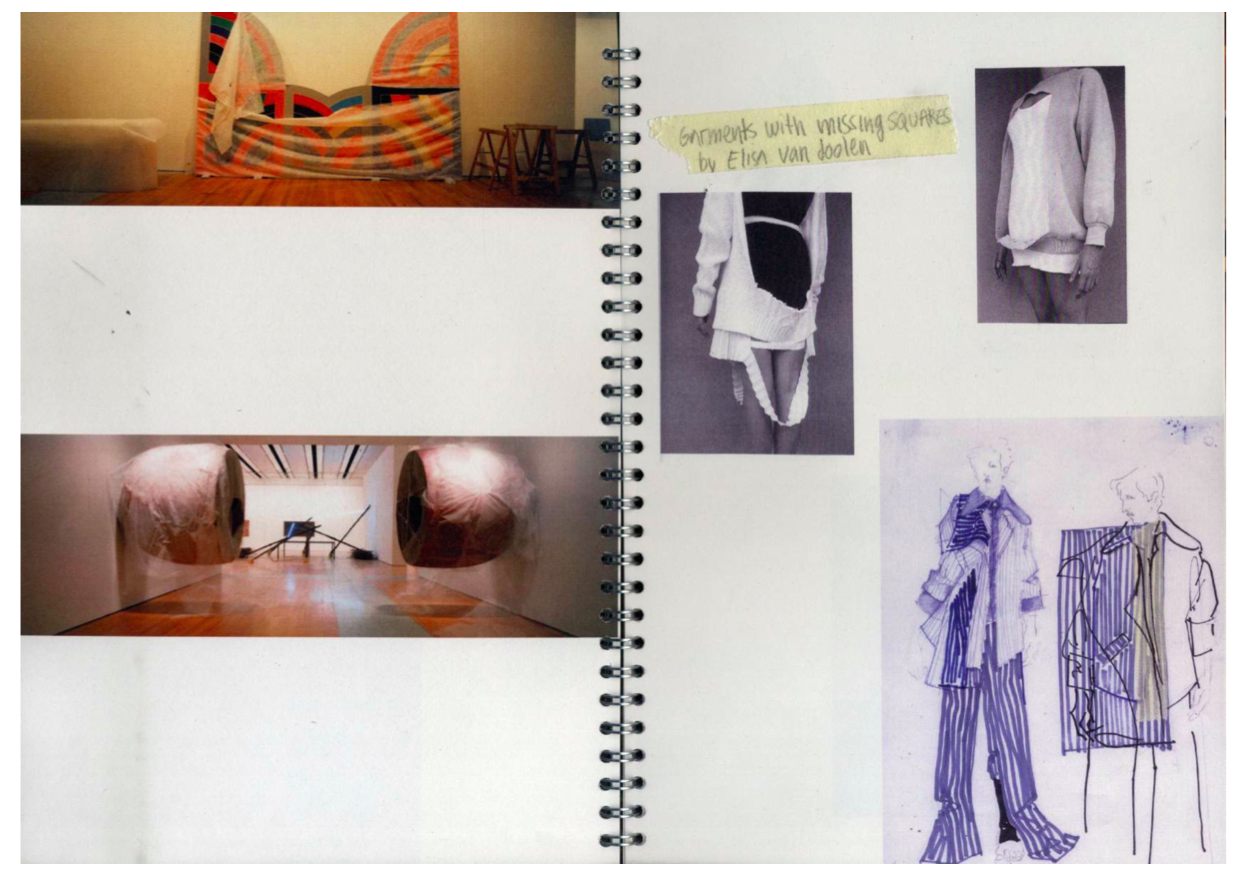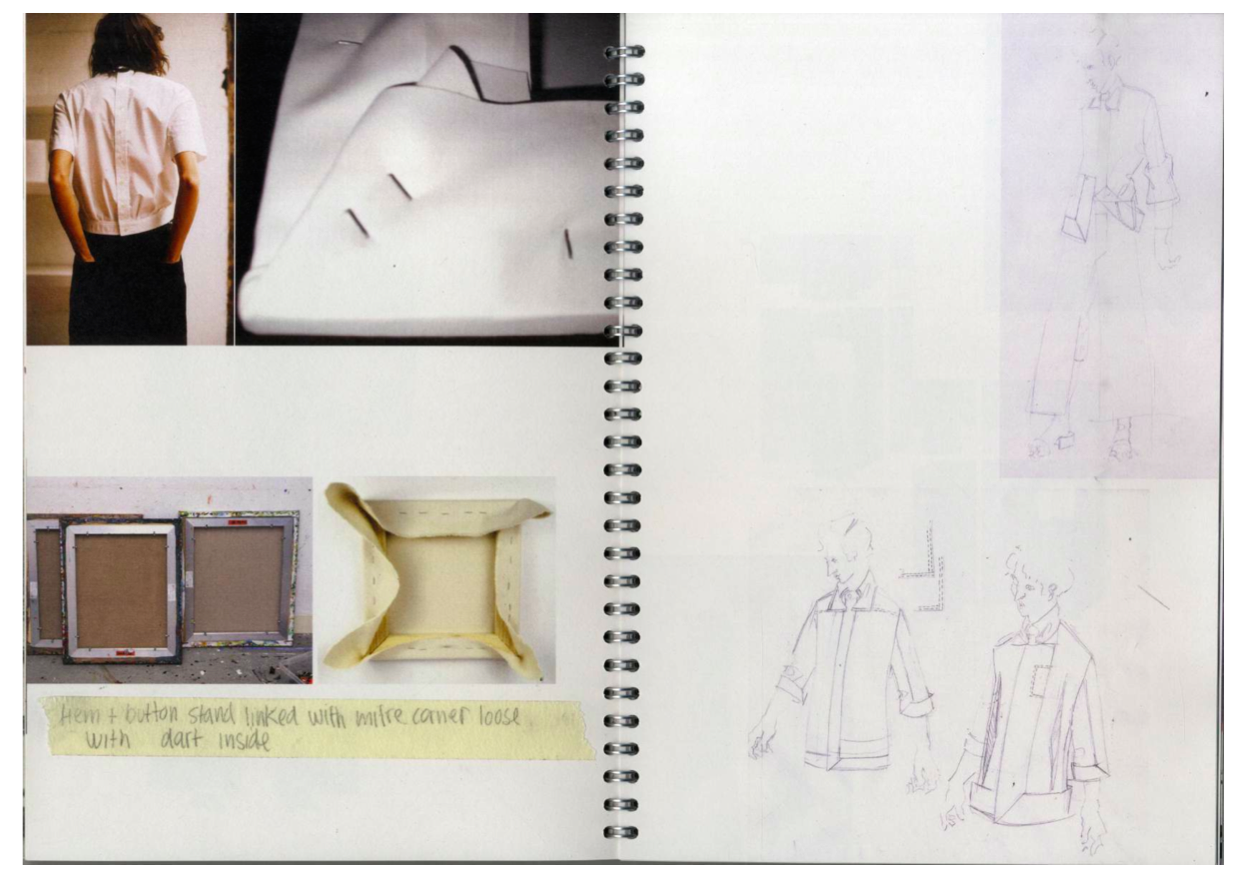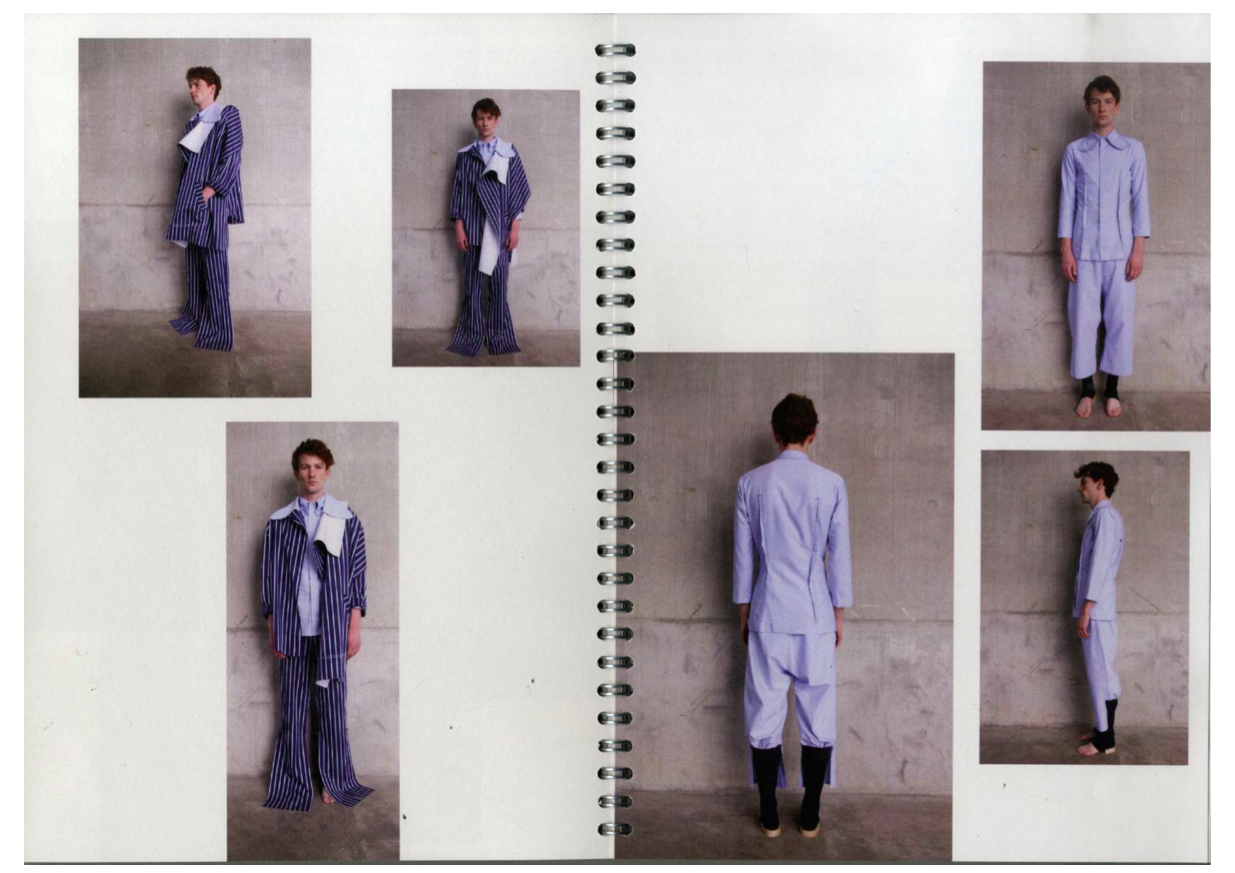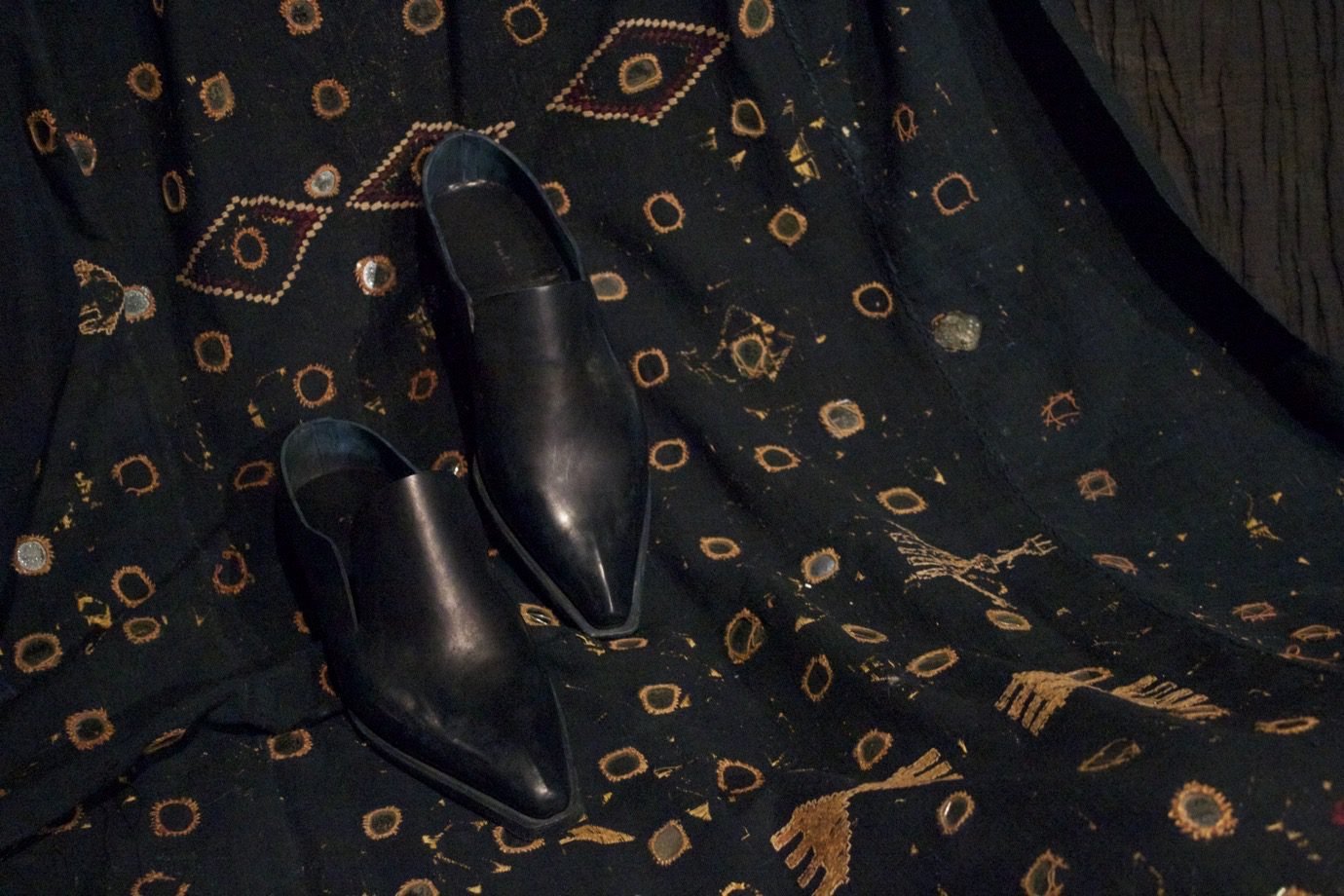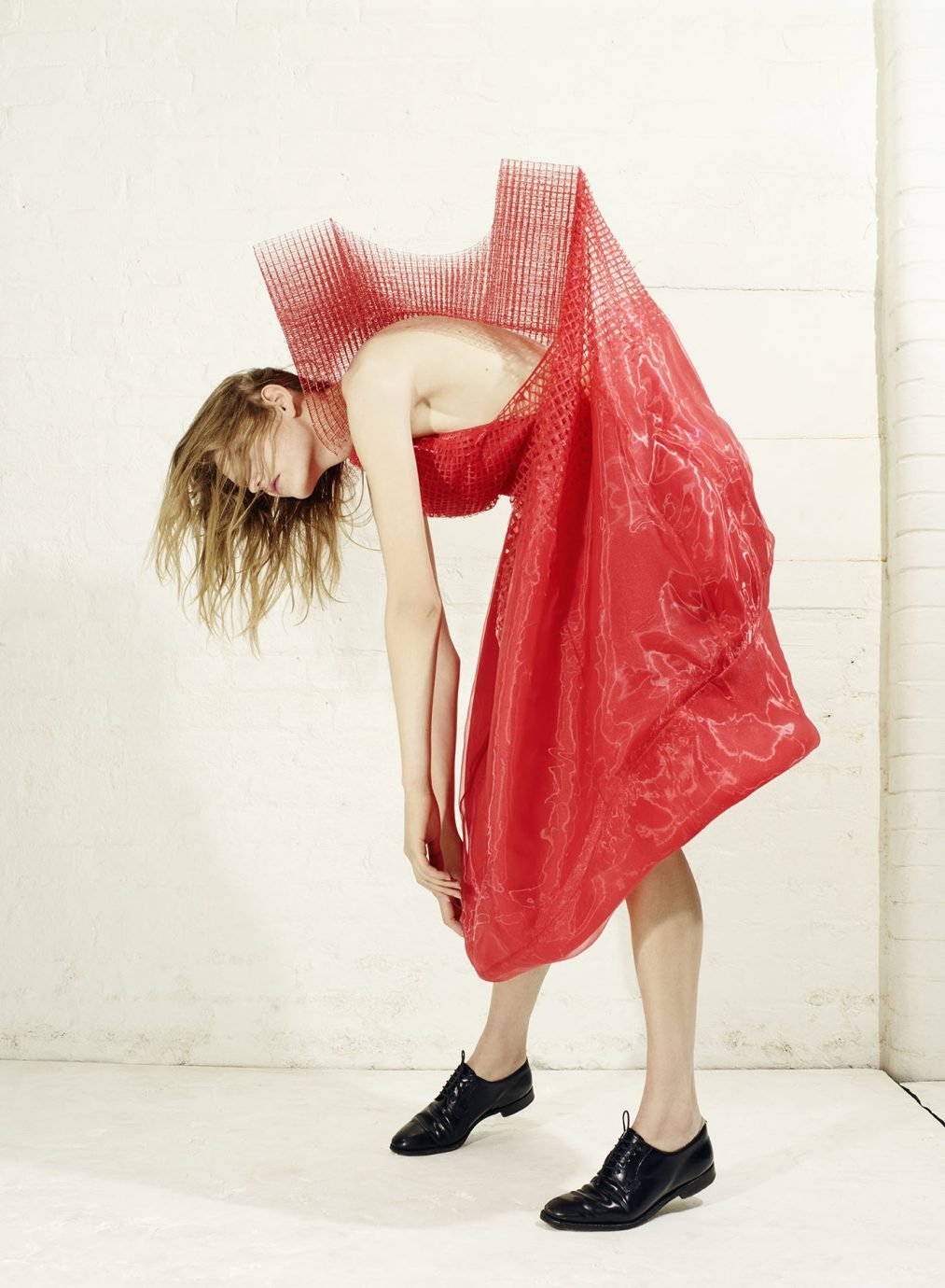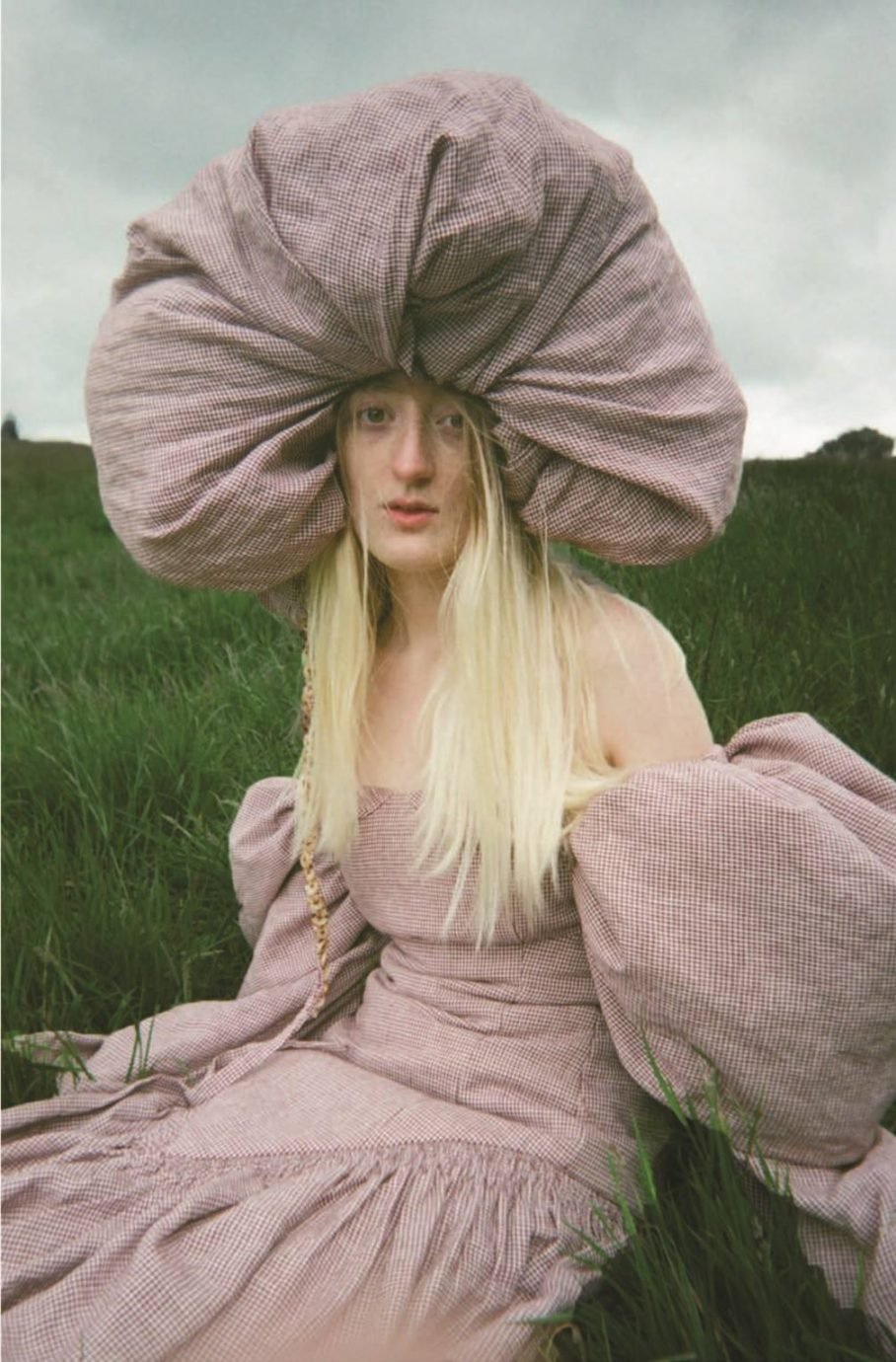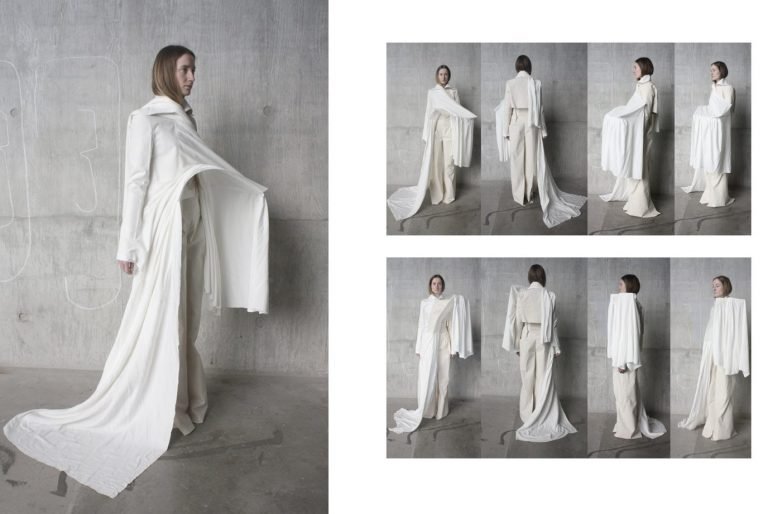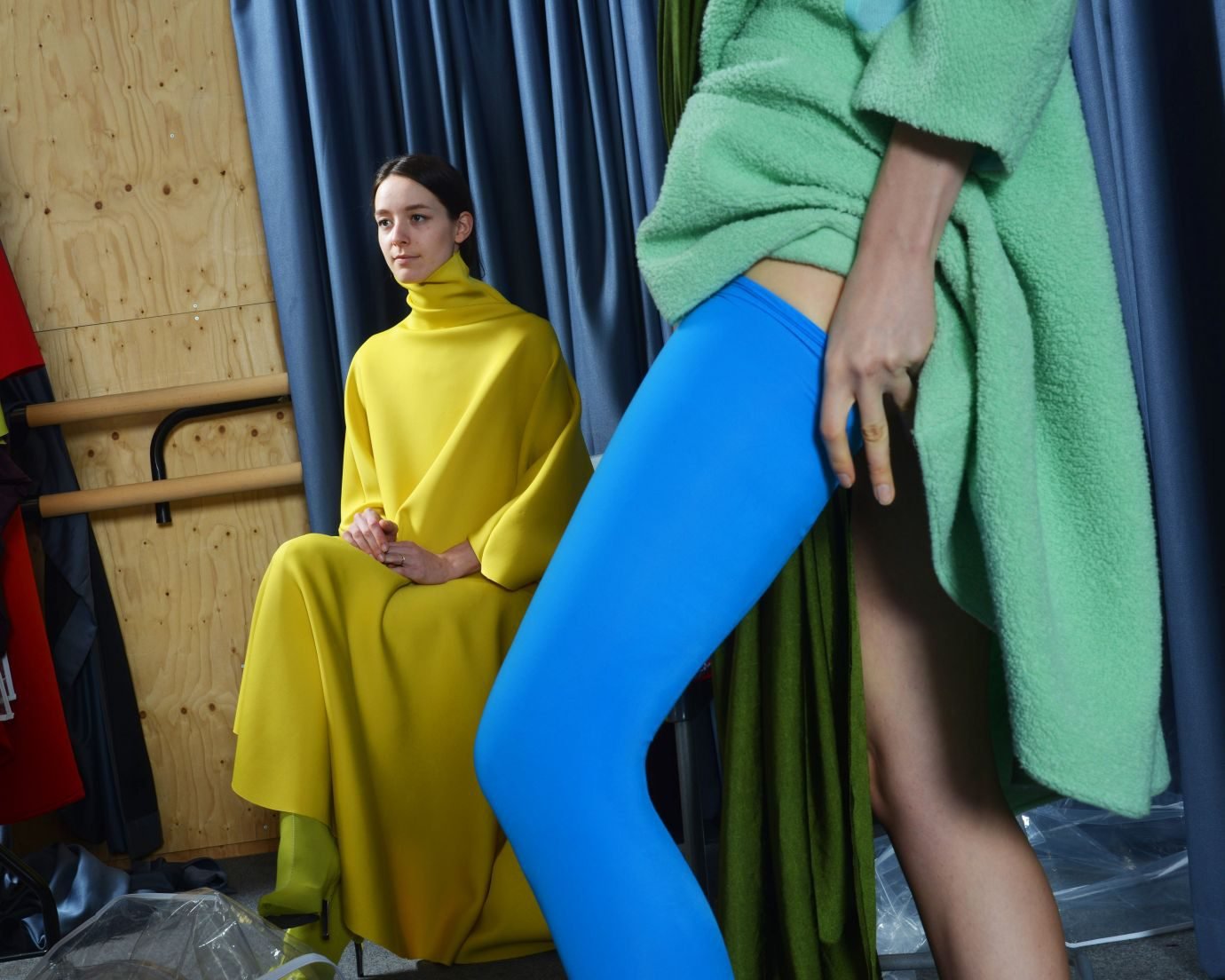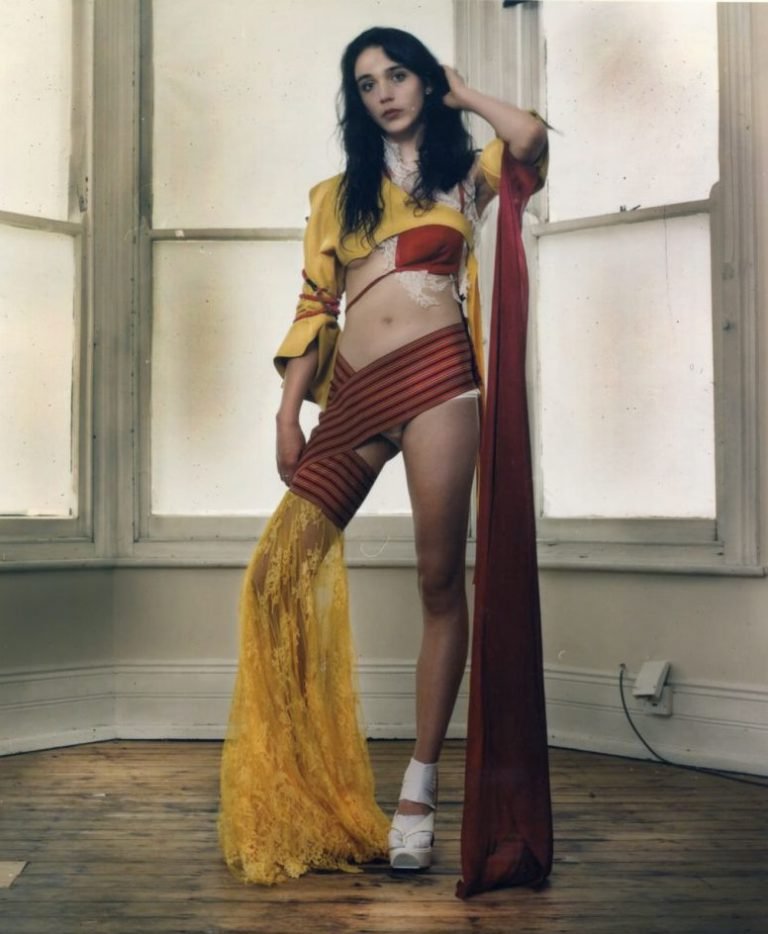When asked about his prolific employment of striped textiles, Pedro begins to reflect upon another key influence in his collection: artist Lucian Freud who was, in fact, an exile of WWII. “I started looking at his personal taste of clothes and how amazingly calm and normal his choice of colour and fabrics was.” He states that it “made sense” to use classic shirting fabrics like Oxfords and light cottons as they not only made it easier to read the drapery, but equally enabled him to “play with the uncanny”. In constructing every top garment from a shirt pattern, he subverts the classical nature of a shirt and consequently pays homage to Freud, who expressed the ordinary human form in an extraordinary manner and I was reminded of Freud’s Girl in a Striped Nightshirt as another connection between the artist and Pedro.
Whilst the concept is many-layered, the collection can be best described as consistent and calming. The accessories are effectively selective and his crafted shoes refer to the role of Zeus within the mythological tale, as the wooden heels attached to neoprene socks create a ‘half-human, half-bull’. They were ‘a nightmare’ to get on during the internal show, Pedro admits. Equally lovely, are the white, minimal ceramic accessories which were created by Pedro’s mother. It was a ‘happy coincidence’ that she was working on ‘some sculptures at the time’, he states. Happy indeed as they achieve in complementing the cool tones of the collection, all the while contrasting soft and hard surfaces.
“LUCIAN FREUD LIVED AND PAINTED THIS WEIRD AND TWISTED NORMALITY.”

